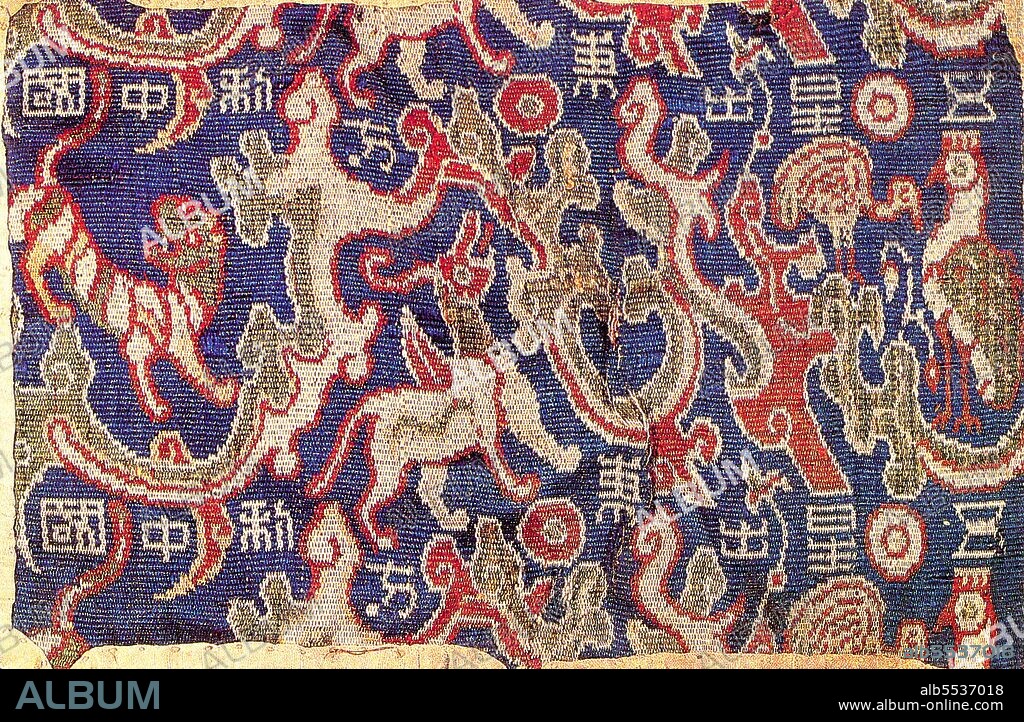alb5537018
China: Part of a brocade sleeve discovered at Niya, Xinjiang, bearing the legend 'Five planets arising in the East are beneficial to China'. c. 2nd-3rd century CE.

|
Zu einem anderen Lightbox hinzufügen |
|
Zu einem anderen Lightbox hinzufügen |



Haben Sie bereits ein Konto? Anmelden
Sie haben kein Konto? Registrieren
Dieses Bild kaufen.
Nutzung auswählen:

Titel:
China: Part of a brocade sleeve discovered at Niya, Xinjiang, bearing the legend 'Five planets arising in the East are beneficial to China'. c. 2nd-3rd century CE.
Untertitel:
Siehe automatische Übersetzung
The ruins of Niya (simplified Chinese: ????; traditional Chinese: ????; pinyin: Níya Yízhi), is an archaeological site located about 115 km (71 mi) north of modern Minfeng Town (also called Niya) on the southern edge of the Tarim Basin in modern-day Xinjiang, China. The ancient site was known in its native language as Cadota, and in Chinese during the Han Dynasty as Jingjue (Chinese: ??; pinyin: Jingjué). Numerous ancient archaeological artifacts have been uncovered at the site. Niya was once a major commercial center on an oasis on the southern branch of the Silk Road in the southern Taklamakan Desert. During ancient times camel caravans would cut through, carrying goods from China to Central Asia.
Bildnachweis:
Album / Pictures from History/Universal Images Group
Freigaben (Releases):
Model: Nein - Eigentum: Nein
Rechtefragen?
Rechtefragen?
Bildgröße:
5100 x 3333 px | 48.6 MB
Druckgröße:
43.2 x 28.2 cm | 17.0 x 11.1 in (300 dpi)
Schlüsselwörter:
ASIEN • ASIEN, KONTINENT • BILDTAPETE • CHINESIN • CHINESISCH • GESCHICHTE • KONTINENT, ASIEN • KUNST • TAPETE • ZEITGESCHICHTE
 Pinterest
Pinterest Twitter
Twitter Facebook
Facebook Link kopieren
Link kopieren Email
Email
